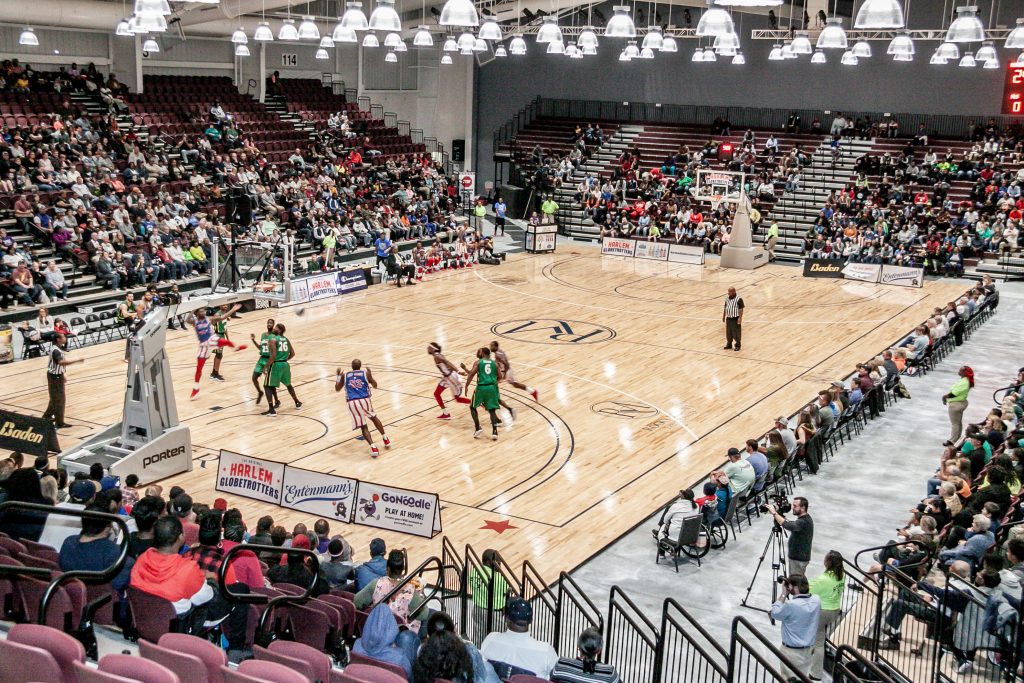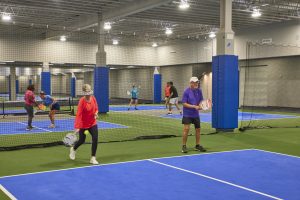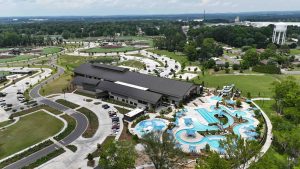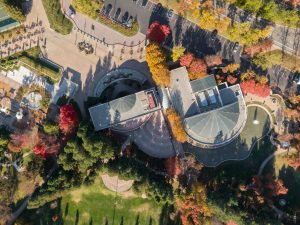Image courtesy of Rocky Mount Event Center
Communities across the country are continuing to discover the potential of hosting athletic events and tournaments to draw in more visitors using sports tourism. A prime indoor sports complex, featuring 8 basketball courts and 16 volleyball courts, can be used for anything from recreational sports and sports tournaments to graduations and prom, drawing in a variety of guests from all over the country. This blog post will cover the significant economic impact that indoor facilities can have on local economies, the comprehensive cost estimates involved in their construction, and financing tips to help make these projects a reality.
Ready to make an impact in your community?
The Power of Sports Tourism
Sports tourism is not merely an avenue for athletic competition; it’s an economic engine that boosts local businesses and infrastructure development. By attracting athletes and spectators from across the nation, these complexes generate substantial revenue for the area through lodging, dining, retail, and entertainment. The ripple effect can rejuvenate local economies, create jobs, and foster a sense of community pride and unity. The Rocky Mount Event Center, in Rocky Mount, NC, features 8 basketball courts/16 volleyball courts and the facility generated an economic impact of nearly $15 million in 2023, providing an example of how much of an impact an indoor facility can have on an area.
Breaking Down the Costs
Constructing a state-of-the-art indoor sports complex is a significant investment, yet the return on investment can be equally substantial. Here’s an overview of the costs involved:
Construction and Infrastructure: This category encompasses the building’s shell, interior courts, seating, lighting, HVAC systems, and more. For a sports tourism level facility housing 8 basketball courts and 16 volleyball courts, costs can range from $27 million to $33 million (roughly $275- $336 per square foot). These figures are based on industry standards and data provided by the SFC’s advisory services department which has provided analysis for over 2,000 projects. These numbers can vary based on location, materials, construction timeline start, and the complexity of the design.
Equipment: High-quality, durable sports equipment is essential for both basketball and volleyball courts. This includes hoops, nets, flooring, and electronic scoring systems. Equipment costs can easily reach hundreds of thousands, depending on the programming quality and quantity required.
Staffing: Operational efficiency relies heavily on skilled staff, from facility managers and maintenance crews to customer service representatives. Staffing expenses will vary based on the size of the team and the wage standards in the facility’s locale.
Unforeseen Expenses: It’s crucial to allocate a portion of the budget for unexpected costs, such as construction delays, material price increases, and additional regulatory requirements. A contingency and escalation fund of 10-19 percent of the total project cost is recommended.
Overcoming Financial Hurdles
Financing a project of this magnitude requires creativity and collaboration. Consider these strategies:
Public-Private Partnerships (P3s): Engaging in partnerships between government entities and private investors can provide the necessary capital while sharing the financial risk.
Bonds for the Public Sector: If a facility is being funded by the local government, sources of financial help can include general obligation debt or bonds, initiating legislative measures such as tourism/bed taxes, and/or the creation of a non-profit development corporation to secure tax-free bonds.
Federal and State Grants: Many grants exist at the federal, state, and local levels that provide financial awards for projects that enhance participation in youth sports.
Grants and Sponsorships: Look for grants from sports organizations and sponsorships from businesses interested in promoting health, wellness, and sports.
Navigating Potential Obstacles
Building an indoor sports complex is not without its challenges. Site selection, zoning regulations, environmental concerns, and community opposition can all pose significant hurdles. Early engagement with stakeholders, transparent communication, and thorough planning can help mitigate these issues.
By understanding the costs, exploring innovative financing options, and recognizing the potential economic and social benefits, communities can turn these ambitious projects into realities. Such facilities not only serve as catalysts for economic growth and community development, making them a true slam dunk for all involved.
If you are curious about how the costs of indoor complexes compare to outdoor facilities, check out our previous blog post that covers outdoor facility costs. If you are interested in bringing any type of new sports facility to your area and are looking for guidance or assistance with the process, feel free to contact us or give us a call at (727) 474-3845.






